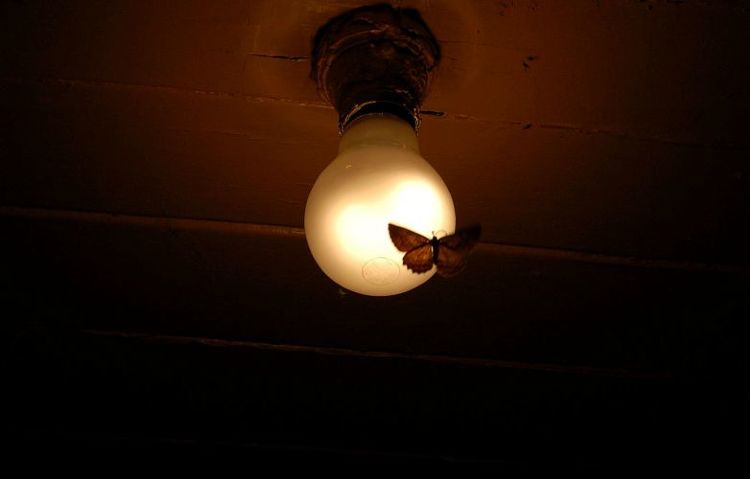If you’re already working to protect bees and butterflies, the good news is that the same conservation strategies intended to support those insects also support moths in most landscapes. Protecting existing natural areas from degradation, restoring native plant communities, and eliminating insecticide use are all basic but essential strategies for protecting moths.
Due to the nocturnal nature of many moth species, a conservation consideration of relevance to moths is protection from light pollution. Artificial lights are believed to be a factor in the decline of nocturnal wildlife such as moths and fireflies, and may disrupt the migration of birds that navigate by starlight such as the indigo bunting (Passerina cyanea).
In the case of some moths the reason for their attraction to artificial light is still not well understood. One theory is that moths navigate by maintaining a constant angular relationship to a celestial light such as the moon or a bright star. Because of the vast distance between the moth and those light sources, the orientation changes very little, allowing for moths to fly in a relatively straight path. Because its orientation to a nearby light source changes quickly as a moth flies toward it however, the moth may become disoriented and fly in circles around the light. Another theory is that moths fly high into the sky during sunrise and then scan the ground below looking for a protected location to hide during the day ahead. At night, when the ground remains dark, a moth may continue flying towards what it perceives as the rising sun, only to return to the light again and again in a state of confusion.

Calls to address light pollution and increase energy efficiency are increasing in many parts of the United States. While many of the proposed solutions are a good start, the emphasis is often on strategies to improve visibility of the night sky – such as replacing older streetlights with downward-facing models which don’t eliminate the hazard to moths and other insects. Further, as cities replace lighting with more energy-efficient LED lamps, what is beneficial for reducing electricity consumption may increase mortality of insects who are drawn to these bright, broad-spectrum light sources.
Moths need more. The best way to protect moths from light pollution is to turn off exterior lights when possible, and to shade windows in lighted rooms at night. If you must use outdoor lighting, consider dim low-voltage lighting, lights that are motion activated, or LED lights with a warm color temperature, as these are all less attractive to moths and other insects.
Finally, and amazingly, electronic “bug zappers” are still manufactured and widely available despite the overwhelming body of research demonstrating that they are useless for controlling pests such as mosquitos. One study examining the effectiveness of bug zappers found that of the 13,789 moths and other insects killed during a summer season by one typical residential bug zapper, only 31 of them were biting insects.

The research, conducted in the 1990s, estimated that 4 million bug zappers were in use across the United States, and operating for an average of forty nights per year, killing roughly 71 billion harmless and beneficial insects. Additional research suggests that the mist of dead airborne insect parts created by bug zappers can actually harm your health (The electrocuted insects are blasted into a fine mist that contains insect parts as well as unkilled bacteria and viruses up to 7 feet (2.1 m) from the device). For all of these reasons, plus the fact that they cost money to purchase and operate, it’s clear that bug zappers deserve scorn and ridicule rather than a place in your yard.



